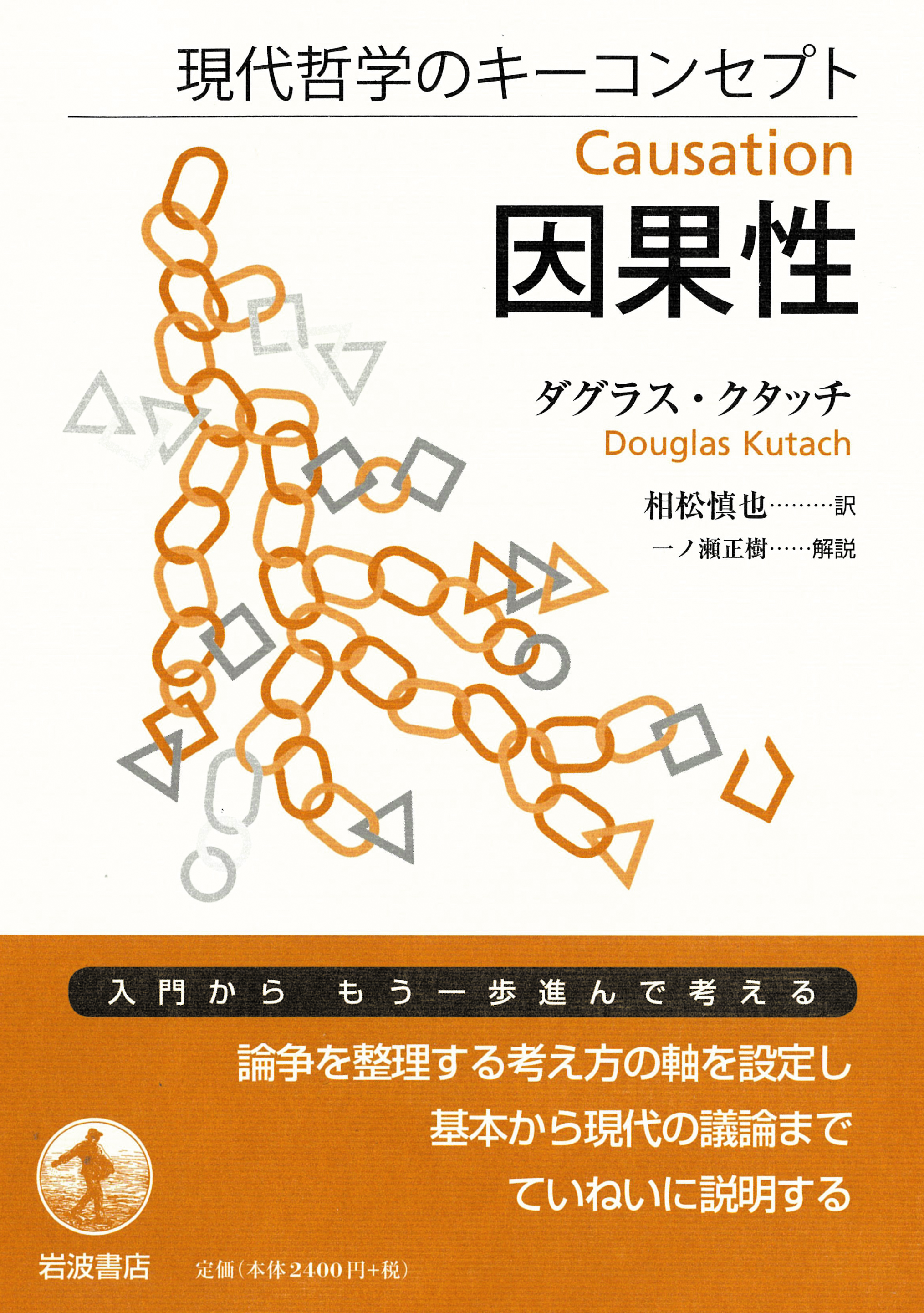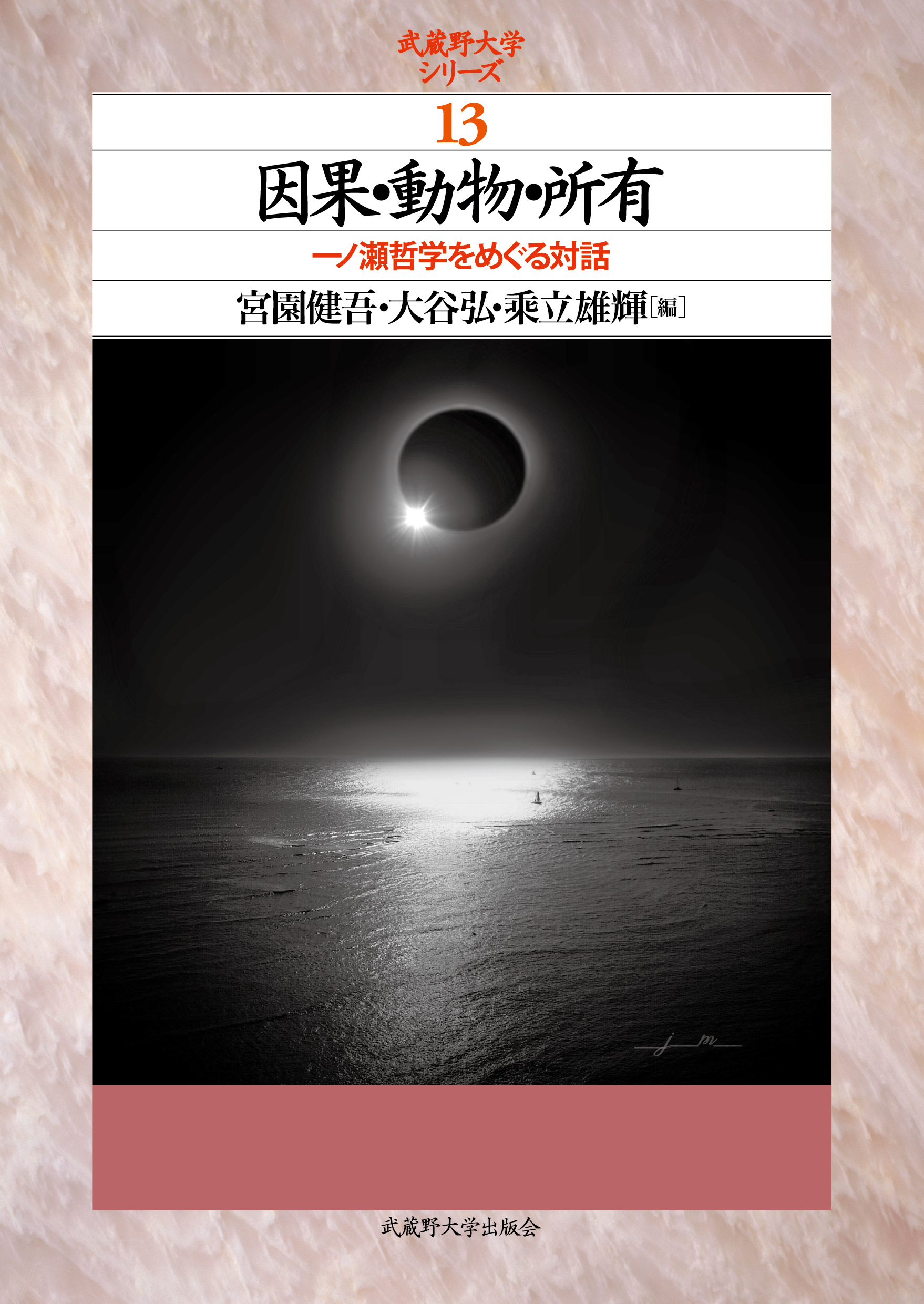
Title
Gendaitetsugaku no Key Concept Ingasei (Causation)
Size
230 pages, A5 format, softcover
Language
Japanese
Released
December 17, 2019
ISBN
9784000613804
Published by
Iwanami Shoten
Book Info
See Book Availability at Library
Japanese Page
This book is a Japanese translation of Causation (Douglas Kutach, 2014), one of the books in Polity's Key Concepts in Philosophy series—its theme is, as the title suggests, causation, or the relationship between cause and effect, and the question it addresses is “What is causation?”. The book introduces, organizes, and examines a wide variety of answers to this fundamental question, providing a contemporary perspective on the understanding of causation—what emerges is not a simple “one best answer,” but the complicated nature of causation that defies unified conception.
Causation is fundamental and important to both our cognition and practice. There are causal relationships all around us, and we use causation to live. For example, when flip a switch to turn on the light in your room—even this simple act is based on an understanding of the cause-and-effect relationship between “flipping the switch” and “the light coming on.” If the light does not come on after you have flipped the switch, you will naturally start looking for the cause: “Is it the life of the lightbulb over, or is it a bad contact or power failure?” Every event has a cause, which, once identified, we can manipulate to bring about what we want (or prevent what we do not want)—this is the worldview ingrained in us. It is through causation that we understand how the world has come to be and how it works, and it is this understanding that allows us to look to the future with a degree of certainty. If we had no grasp of causation, we would not even be able to turn on the lights in our home.
However, causation is also quite ambiguous. Science has developed ways of identifying causal relationships, but the fundamental question of what causation really is remains unanswered. What does it mean when we say there is a causal relationship between events A and B (i.e., A is the cause and B is the result)? Does it mean that whenever event A occurs, event B follows, or merely that when event A occurs, there is a high likelihood of event B occurring? Or does causation require something beyond the pattern of events—a “force” of A that brings about B, or a “law” that links A and B? All said and done, all we can observe is the pattern of events; so, where is the evidence for anything beyond that?
In other words, there are various views on causation, each with its own merits and demerits, and we still do not have a comprehensive conception of it. I hope this book helps you recognize this fact and become acutely aware of how elusive and complicated causation is. When we are confronted with serious personal or social problems, we tend to engage in heated debates on the problems’ causes or who is responsible for them. However, it is possible that people have different conceptions of causation depending on the context, and if we remain unaware of this, we cannot hope to have constructive discussions. This book will, more than anything else, promote this awareness.
(Written by AIMATSU Shinya, Assistant Professor, Graduate School of Humanities and Sociology / 2021)



 Find a book
Find a book


